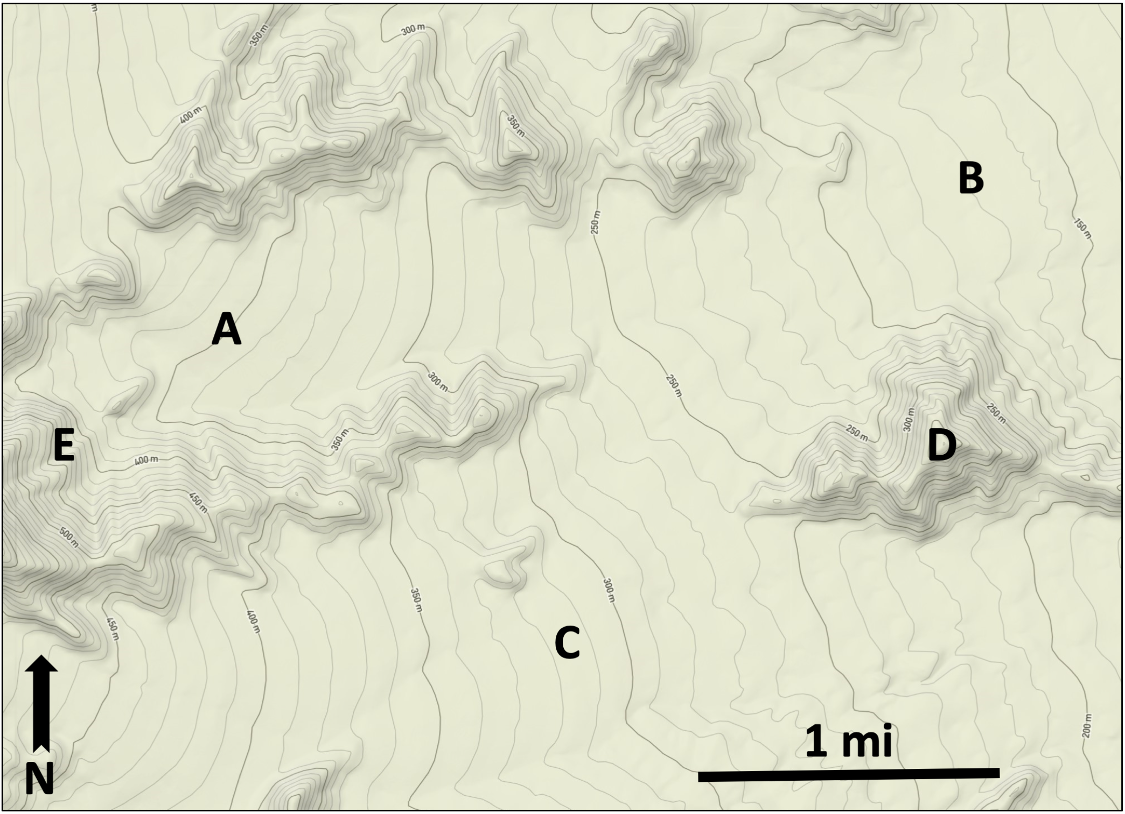2.3: Activity 2B- Topographic Map of Death Valley National Park
- Page ID
- 14512
\( \newcommand{\vecs}[1]{\overset { \scriptstyle \rightharpoonup} {\mathbf{#1}} } \) \( \newcommand{\vecd}[1]{\overset{-\!-\!\rightharpoonup}{\vphantom{a}\smash {#1}}} \)\(\newcommand{\id}{\mathrm{id}}\) \( \newcommand{\Span}{\mathrm{span}}\) \( \newcommand{\kernel}{\mathrm{null}\,}\) \( \newcommand{\range}{\mathrm{range}\,}\) \( \newcommand{\RealPart}{\mathrm{Re}}\) \( \newcommand{\ImaginaryPart}{\mathrm{Im}}\) \( \newcommand{\Argument}{\mathrm{Arg}}\) \( \newcommand{\norm}[1]{\| #1 \|}\) \( \newcommand{\inner}[2]{\langle #1, #2 \rangle}\) \( \newcommand{\Span}{\mathrm{span}}\) \(\newcommand{\id}{\mathrm{id}}\) \( \newcommand{\Span}{\mathrm{span}}\) \( \newcommand{\kernel}{\mathrm{null}\,}\) \( \newcommand{\range}{\mathrm{range}\,}\) \( \newcommand{\RealPart}{\mathrm{Re}}\) \( \newcommand{\ImaginaryPart}{\mathrm{Im}}\) \( \newcommand{\Argument}{\mathrm{Arg}}\) \( \newcommand{\norm}[1]{\| #1 \|}\) \( \newcommand{\inner}[2]{\langle #1, #2 \rangle}\) \( \newcommand{\Span}{\mathrm{span}}\)\(\newcommand{\AA}{\unicode[.8,0]{x212B}}\)

- Determine the contour interval of the map. Show your work.
- What is the elevation at Point B?
- Interpolate the elevation at Point C. Hint: interpolation is the process of estimating an unknown value from neighboring known values.
- What is the elevation at Point A?
- Could a person standing at Point A see their friend located at Point C, with the aid of high-power binoculars? Why or why not?
- Could a person standing at Point D see their friend located at Point B, with the aid of high-power binoculars? Why or why not?
- Which area on this map has the steepest slope?
- A
- B
- C
- E
- How did you determine this?
- Calculate the gradient from Point A to Point B, in feet per mile (feet/mile). Hint: Use the scale bar to determine the distance from Point A to Point B. Show your work!
Attributions
- Figure 2.22: Derivative of “Topographic Map near Death Valley National Park” (Public Domain, USGS) by Chloe Branciforte


